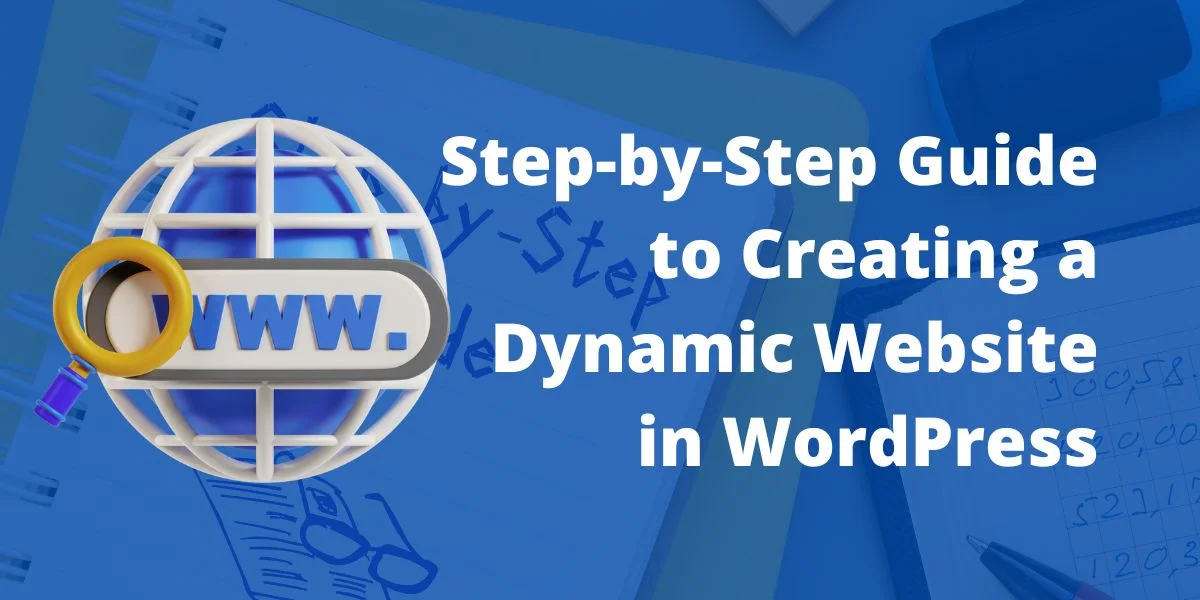
Creating a dynamic website in WordPress has never been easier, thanks to this versatile content management system (CMS). WordPress allows you to build visually appealing, interactive sites that can be updated frequently with new content. Whether you’re a blogger, a business owner, or a creative professional, this guide will take you through the essential steps to create your dynamic website in WordPress.
Dynamic content refers to web content that changes based on user interaction or other variables. Unlike static content, which remains constant until manually updated, dynamic content can adapt to different users, contexts, and timeframes. This can include personalized greetings, location-specific information, and updated news or blog posts. Dynamic website in WordPress typically use databases to manage and serve content, enabling users to experience a more engaging and interactive web environment.
Dynamic content offers several advantages:
Now that you understand the importance of dynamic content, let’s explore how to create a Dynamic website in WordPress.
Also Read: https://analyticitservices.com/website-design/website-redesign/
1. Choose a Domain Name and Hosting
The first step in creating your Dynamic website in WordPress is to select a memorable domain name that reflects your brand or purpose. After selecting a name, you’ll need to register it with a domain registrar.
Next, choose a hosting provider that suits your needs. Hosting is crucial because it determines how your website will perform. Look for a provider that offers WordPress-specific hosting, which ensures compatibility and often includes features like automatic updates and backups. Consider reputable hosting providers such as Bluehost, SiteGround, and HostGator for optimal performance.
2. Install WordPress
After securing your domain and hosting, the subsequent step is to install WordPress. Most hosting providers offer one-click installation options for WordPress, simplifying the process. Simply navigate to your hosting dashboard and look for the WordPress installation option. Follow the on-screen instructions to complete the WordPress installation process.
3. Choose a Dynamic Theme
The design of your website plays a crucial role in user engagement. WordPress offers a vast library of themes, both free and premium, that can help you create a visually appealing and functional website. When selecting a theme, look for one that is responsive (mobile-friendly) and designed for dynamic content.
Consider themes that allow for customization, such as Astra, Divi, or OceanWP. These themes come with built-in options to help you modify layouts, colors, and fonts without needing extensive coding knowledge.
4. Choose Your Plugins
Plugins serve as vital components that improve your website’s capabilities and overall performance. For a dynamic website in WordPress, consider the following types of plugins:
5. Create Your Content
Now it’s time to populate your website with content. Develop key pages like Home, About, Services, Blog, and Contact to provide essential information to your visitors. Use WordPress’s intuitive editor to add text, images, videos, and other media.
When writing content, focus on clarity and value. Ensure your content is well-structured with headings, bullet points, and images to make it easy to read. Regularly update your blog with new articles, tutorials, or news to keep your site dynamic and engaging.
6. Publish Your Site
Before launching your website, take the time to preview it to confirm that all elements are displaying correctly and functioning as intended. Examine your site for any broken links, or formatting inconsistencies, and ensure it is compatible with various devices and browsers.
Once you’re satisfied, it’s time to publish your site! Go to the settings in your WordPress dashboard and adjust your visibility settings to make your site public. Share your newly created website on social media, forums, and with friends and family to attract initial visitors.
Creating a dynamic website in WordPress is a rewarding endeavor that can greatly enhance your online presence. By following this step-by-step guide, you can set up a site that not only looks great but also engages users with relevant, personalized content. Embrace the potential of dynamic content, and watch your website thrive!